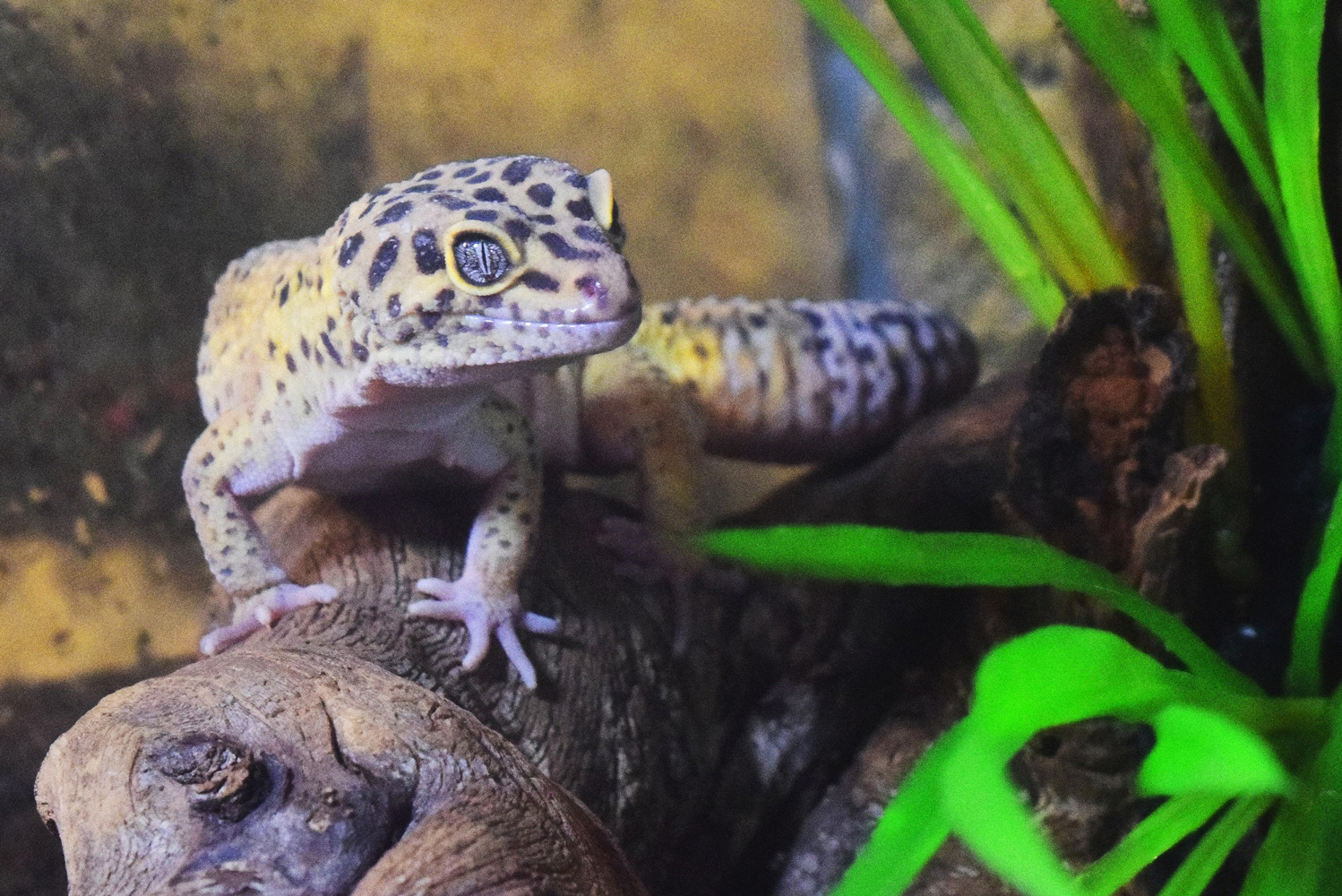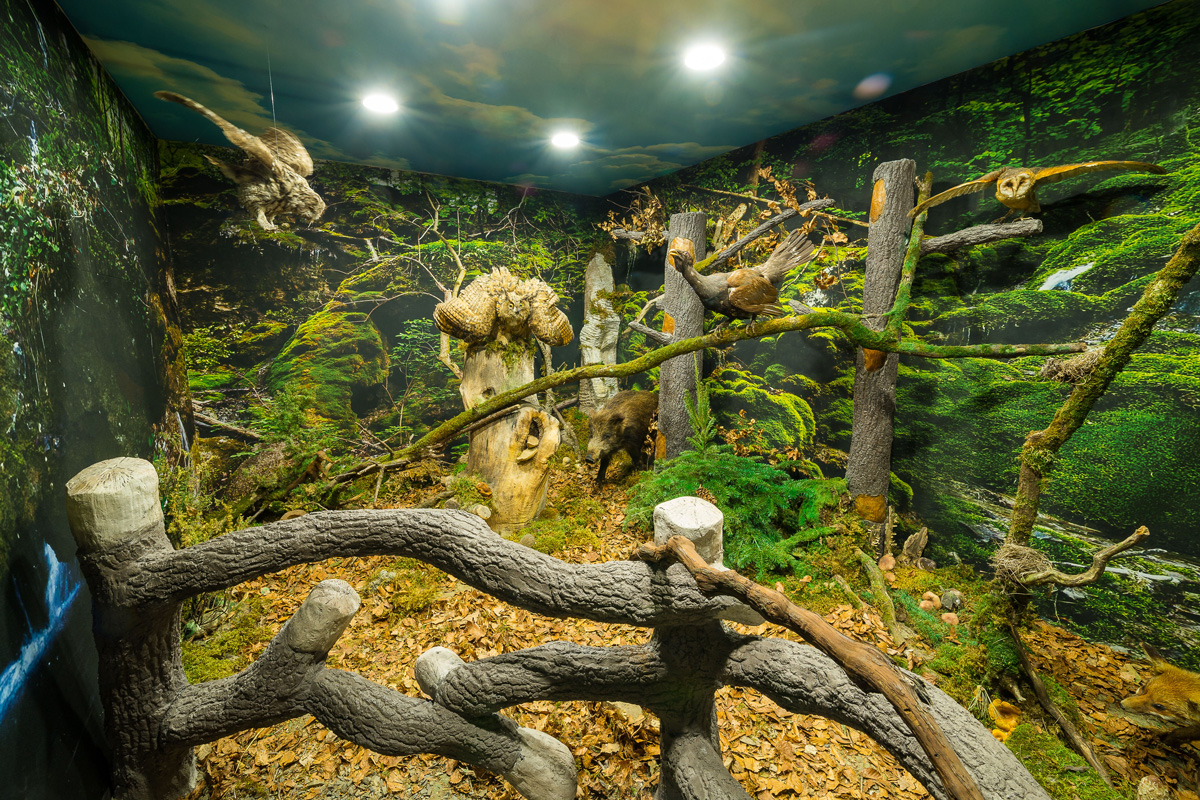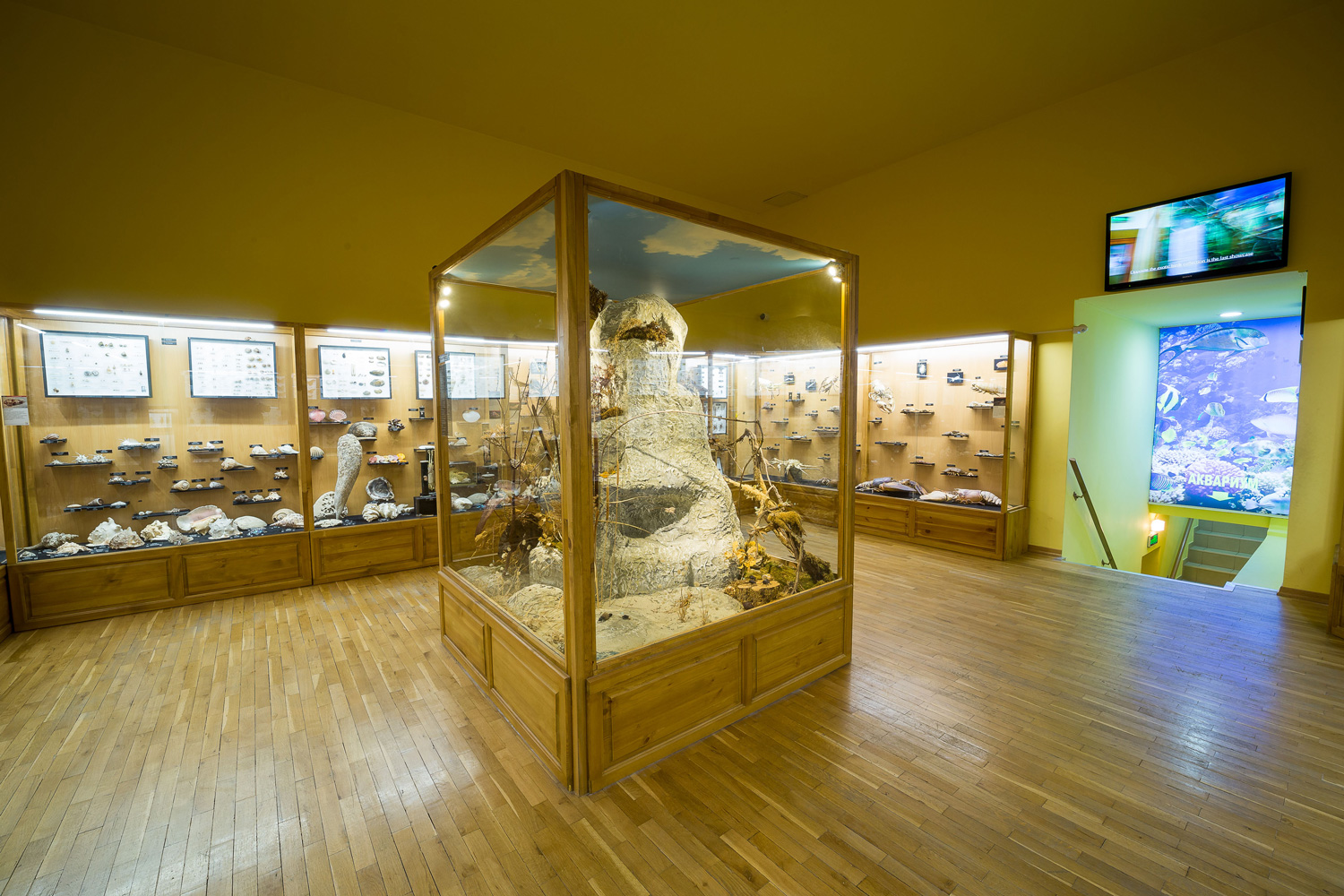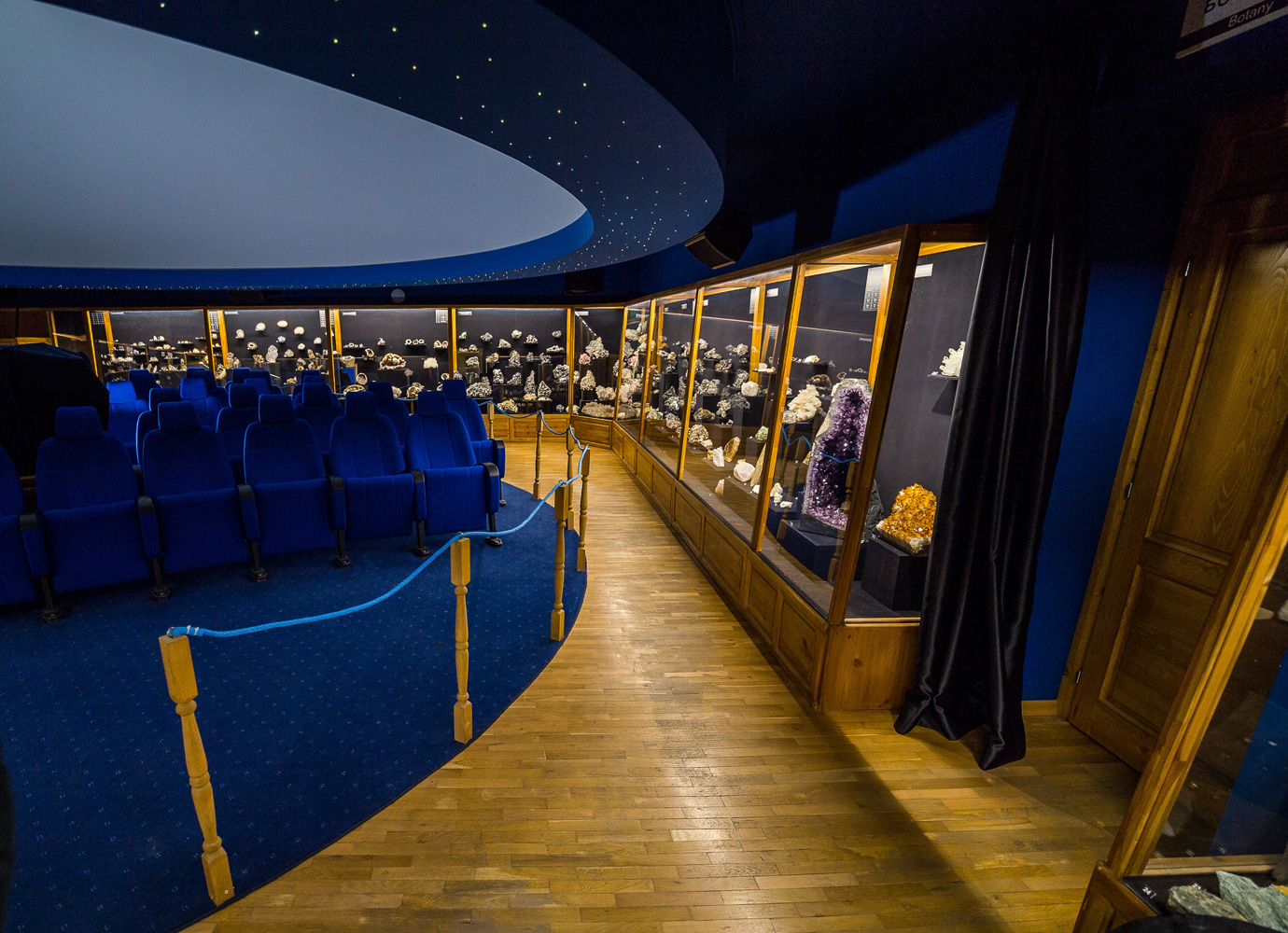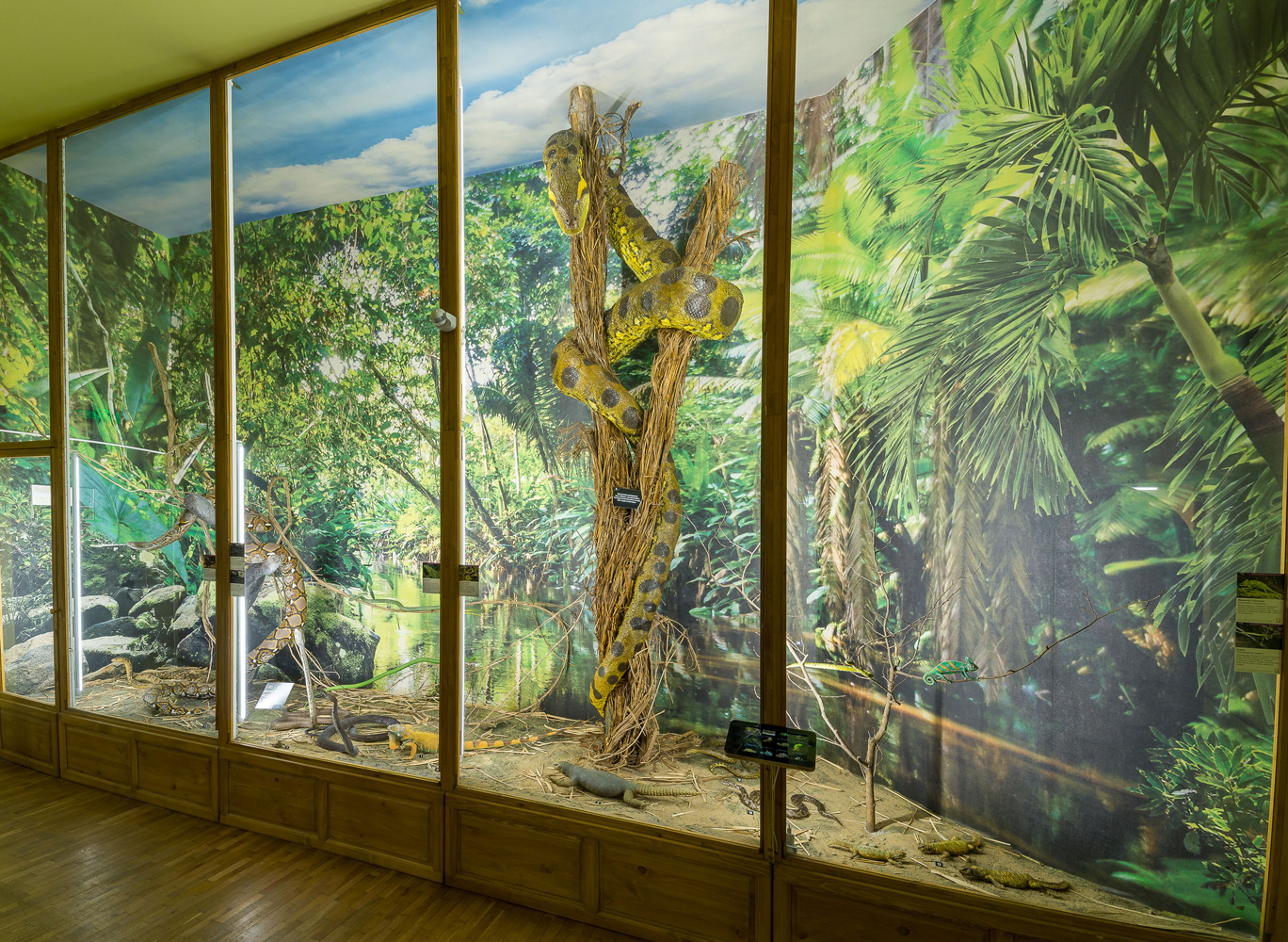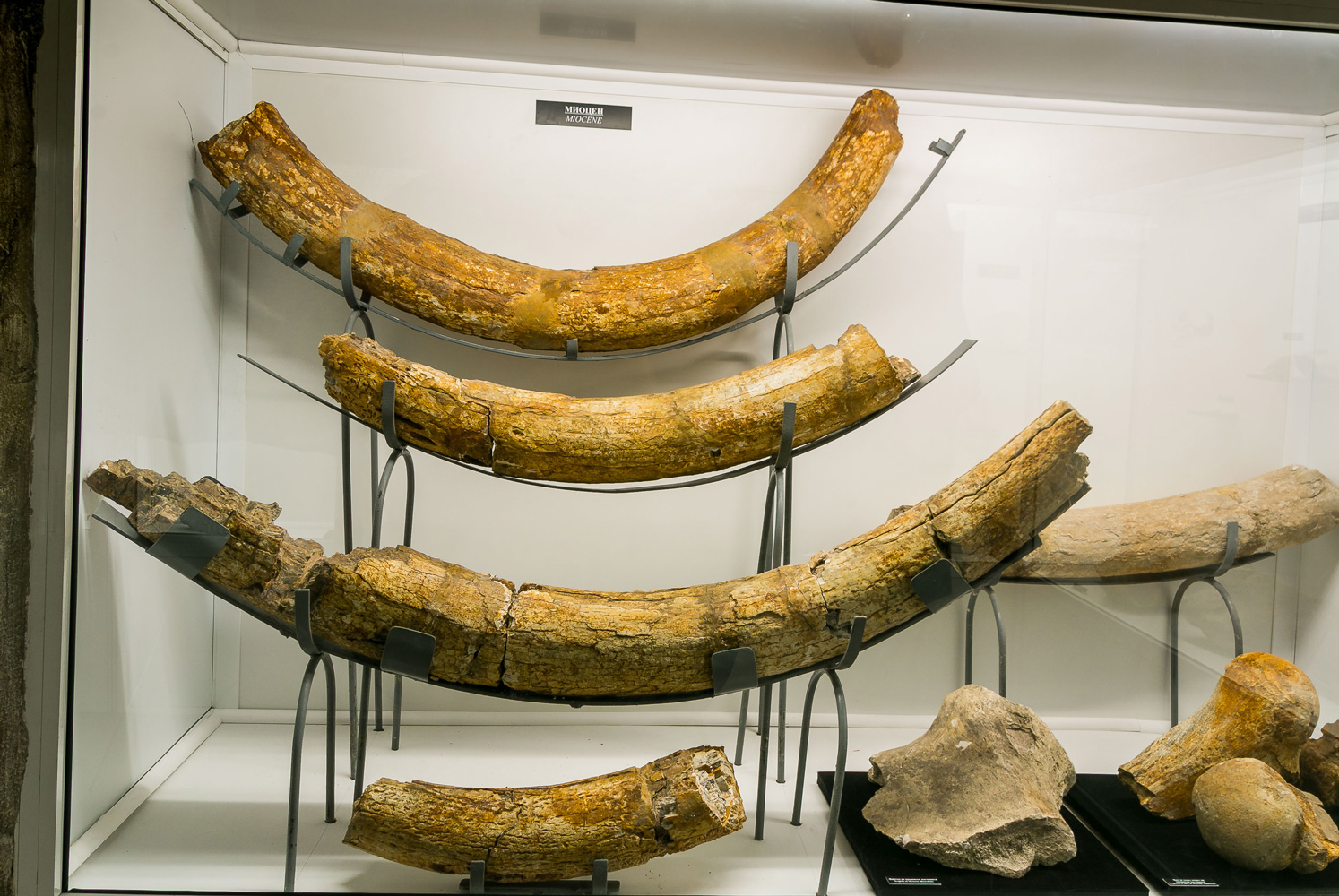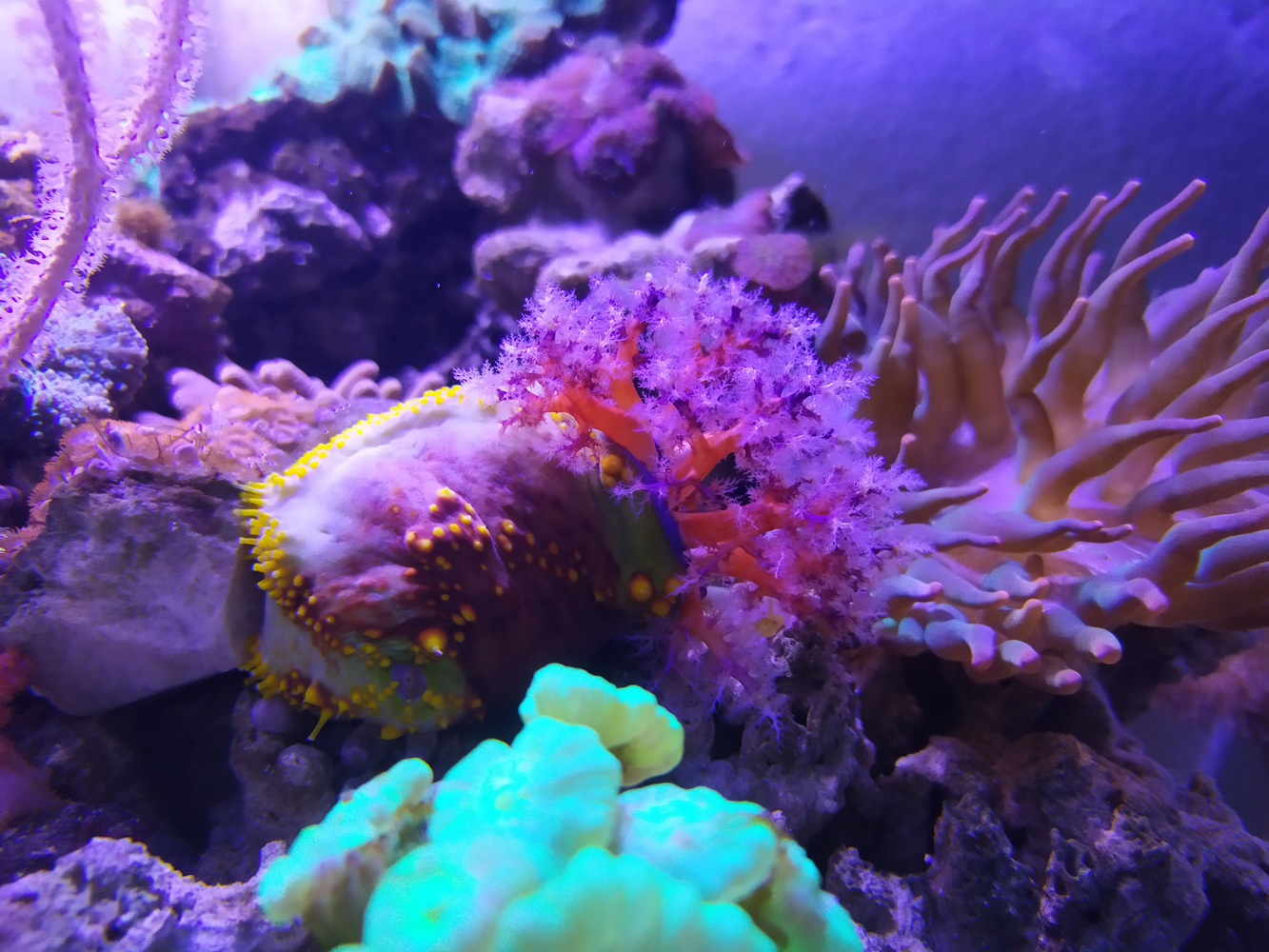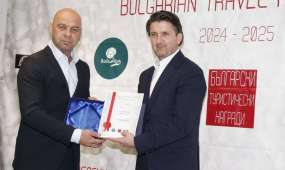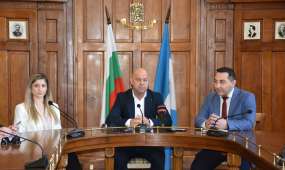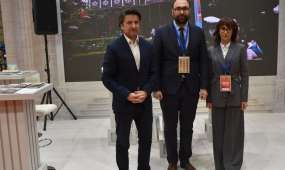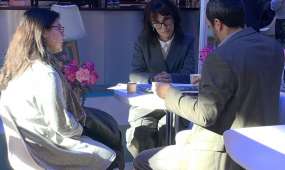Regional Natural History Museum
phone: +359 32 633 096 email: [email protected] link: https://rnhm.org/en/homeAfter the reconstruction, the Regional Museum of Natural History - Plovdiv has the richest and most diverse aquarium in the country, home to 216 species of fish, octopi and marine invertebrates, a terrarium with live spiders, amphibians and reptiles, a hall with live tropical butterflies, and a digital planetarium. The planetary show displays the vast and mysterious world of space - the hall is equipped with a large dome with a diameter of 8 meters and 50 seats.
HISTORY
On September 5th, 1955 the museum was opened as a “Temporary exhibition of materials belonging to a future Natural History Museum”, although the collections were not completed and the design scheme was not finished.
The first exposition arranged in a scientific and artistic order was opened on May 8th, 1960, illustrating Bulgaria’s flora, fauna, and geology. The scientific stocks of the museum were established in the period 1970–1971, covering the sections of “Geology”, “Botany”, “Zoology of Invertebrates”, and “Zoology of Vertebrates”. In 1974, as a result of the enormous research work done by the staff and the scientific advancement of the museum, the exposition was further enlarged, including new sections such as “Minerals from the Rhodope Massif”; overall reconstruction and artistic arrangement of the exposition in the “Geology” Hall; “Edible and poisonous mushrooms in Bulgaria”; “Protected natural sites and plants in Plovdiv region”.
The first “FRESHWATER AQUARIUM” in the expositions of Bulgaria’s Natural History Museums was established in 1974 in the Museum’s basement premises. Situated on an area of 100 m2, the facility harbors more than 32 aquarium fish species and exotic plants arranged in 48 beautiful aquariums. Overall improvement of the existing exposition was done in the period 1988-1993 with a stronger emphasis on the ecological aspect in all exhibition halls, new materials and showcases, as well as rearrangement of the already existing vitrines and dioramas.
In 2006 the museum was given a new name – REGIONAL NATURAL HISTORY MUSEUM. It became a methodical center of the natural history museums, “Nature” departments, and the museum collections in Southern Bulgaria. The Regional Natural History Museum - Plovdiv is the second biggest museum in the country, harboring a modern exposition with a strong emphasis on nature conservation.
EXPOSITIONS
MINERALS
The “Geology” section of the Regional Natural History Museum in Plovdiv has been in existence since the establishment of the museum in 1955.
The establishment of this section as well as the whole museum was based on the materials of the rich encyclopedic museum at the former French college in the town of Plovdiv.
Through the years, the exposition and the overall stock of the “Geology” section have been replenished with new paleontological, mineralogical, and petrographic specimens from Bulgaria and abroad.
In early 1991, following the overall reconstruction of the “Geology” Hall, the exposition was arranged under a new thematic plan and modern design. Three sub-sections – Paleontology, Mineralogy, and Petrography, are presented in an area of 100 m2.
In 2015, the Digital Planetarium was built in Minerals Hall. Thanks to this technology, screenings, open lessons and lectures are already being held to enrich our knowledge of astronomy.
BOTANY
The “Botany” section has been opened since the establishment of the museum in 1955. Initially, the establishment of this section as well as the whole museum was based on the materials of the rich encyclopedic museum at the former French college in the town of Plovdiv.
Since 1967, this first exposition has been constantly replenished and renovated.
The exposition of the hall is located in 12 separate showcases.
In part of the first showcase, 10 soil samples of the most common soils in Bulgaria are exhibited.
There are two showcases, where you can find models of the most widespread mushroom species
species in Bulgaria - edible, poisonous and conservatively significant types of mushrooms are arranged on an ecological basis as well as the main types of lichens occurring in our nature.
The systematics of plants is represented in 10 showcases. A total of 107 herbarium materials are exhibited by representatives of Rhodophyta, Chlorophyta, Charophyta, Bryophyta, Lycopodiophyta, Equisetophyta, Pteridophyta, Conifers (Pteridophyta), Conifers Pinopsida) and the largest families of the Magnoliophyta in the flora of Bulgaria.
The exposition in the hall ends with a showcase related to Botanics development and basic principles in the collection and preparation of herbarium specimens as well as a herbarium specimens of different species of seaweed collected from the Black Sea and the Atlantic ocean from the rich collection of the encyclopedic museum of the former French College in Plovdiv.
In the center of the hall an artificial tree is built consisting a real beech trunk (Fagus sylvatica) with distinctly different annual rings. By counting the number of the rings visitors can establish the tree’s age.
Herbarium. The beginning of the scientific herbarium of the museum was laid by a collection comprising some 6,400 leaves inherited from the French college in Plovdiv, involving mainly materials from other countries. Now, the herbarium contains more than 18,000 leaves classified in three collections: “Bulgarian flora” – approximately 10,000 leaves and plants mainly from South Bulgaria, “Foreign floras” - approximately 4,000 leaves, and “Striburny’s herbarium” – approximately 4,000 leaves.
INVERTEBRATES
The exhibition in the "Invertebrates" Hall is located in 15 separate showcases. They are systematically arranged by representatives of the world invertebrate fauna. The numbering of the windows is clockwise, entering from left to right. The exposition is a mix of wet and dry preparations of some rare and characteristic species. Representatives who are very rare or too small to display are represented by photo material. In the hall you can see the complete system of our insect species at family level.
A separate module is the collection of the largest and most interesting insects in the world. The largest beetle, moth, butterfly, praying mantis, stick insect, ant, hymenopteran, dipteran and dragonfly.
Some other modules are present:
- The built-in diorama in the middle of the hall, which shows the behavior of some interesting insect species: dung beetles, mantis, ground beetles, etc.
- The living beehive with bees collecting pollen outside the museum through a special hole in the wall.
- The 50-million-old insects in copal module in which visitors can observe ants and other insects.
AQUARIUM
"Aquarium Hall" opened in 1974, located on the ground floor of the museum, it became a favorite spot for aquarists and visitors. Located at 100 square meters, it is the largest freshwater aquarium in the country. In conditions close to the natural, over 50 species of rare tropical fish from different countries of Asia, Africa, Australia and America are shown.
Today the Aquarium has 30 freshwater aquariums located on the periphery of the hall and one central marine aquarium. The species diversity exceeds 170 species from all over the world. Biotope aquariums with American cichlids, African cichlids from Malawi Lake and African cichlids from Tanganyika Lake are present.
Emblematic are the aquariums with African lungfish protopterus and arapaima (the largest freshwater fish in the world). Aquariums with different breeds of discus and angelfish, two aquariums with piranhas, a variety of characins, labyrinth fish and various crustaceans. Last but not least are the aquariums with characteristic Bulgarian fish showing the local diversity of ichthyofauna.
SEA AQUARIUM
The sea aquarium consists of 6 aquariums with a total volume around 7500 liters. About 50 species make up our biodiversity. In the aquariums you can see a great variety of exotic fish and corals inhabiting the Pacific, Indian and Atlantic oceans.
More well-known representatives are the blue tang, clown fish, lion fish, angel fish, zebrasomes and others. Besides corals, marine aquariums can also shelter many invertebrate animals, including the octopus.
You will also have the pleasure of seeing an unusual aquarium full of jellyfish from the Black Sea. Not to be missed is our newest ocean dweller - the blacktip reef shark you can only find in the aquarium of the RNHM-Plovdiv. It is housed in the large central aquarium and is currently about 60 cm in size.
In the future, an extension of the hall is planned with more aquariums, including a huge, ten thousand-liter aquarium, as well as an aquarium for representatives of the Black Sea fauna.
FISHES
During the arrangement of the first scientific and artistic exposition in the museum in 1960 the representatives of the Fish class were exhibited together with the amphibian and reptile specimens. In 1985, after the construction of a new hall in the basement premises of the museum, the items of the Fish class were exhibited in the new hall, while the existing exposition was turned into “Amphibians and reptiles” Hall.
The new thematic exposition plan was based on dioramas of stuffed animals and a systematic collection of freshwater and marine species.
The exposition begins with a decorative explanatory board showing the evolution in fish and the geographical distribution of the ichthyofauna nowadays. One of the lower representatives - Sea lamprey (Petromyzon marinus), is also included in the exposition. Real sharks are exhibited in a spatially arranged diorama, including Grey reef shark (Carcharinus sp.), Cat shark (Scyliorhinus sp.), Piked dogfish shark (Squalus acanthias), Angelshark (Squatina sp.), Spotted torpedo (Torpedo marmorata), etc.
The marine specimens are exhibited in a separate showcase, including the most typical Black Sea species, such as Leaping mullet (Liza saliens), Horse mackerel (Trachurus trachurus), Bluefish (Pomatomus saltatrix), European flounder (Platichthys flesus), Long-snouted seahorse (Hippocampus ramulosus), Scorpid (Scorpaena porcus), and other species. More than 20 species are included in the exposition.
Representatives of oceanic species and inhabitants of the warm seas are exhibited in a diorama made up of stuffed specimens such as Sea devil (Lophius piscatorius), Flying gurnard (Trigla gurnardus), Morena (Morena helena), Swordfish (Xiphias gladius), Flying fish (Exocoetidae), Long-spined porcupine fish (Diodon sp.), etc. More than 20 species are included in the exposition.
The freshwater ichthyofauna is presented by more than 22 species. Some of the most typical ones are: Brown trout (Salmo trutta), Bardslee trout (Salmo gairdneri irideus), European chub (Leuciscus cephalus), Zander (Stizostedion lucioperca), Ray-finned fish (Barbus cyclolepis), European perch (Perca fluviatilis), Sheatfish (Silurus glanis), etc.
The representatives of the Chondrostei sub-class are shown in a diorama with specimens of Sterlet (Acipenser ruthenus) and Ship sturgeon (Acipenser nudventris). In addition, the showcase contains specimens of Eel (Anguilla anguilla), Carp (Cyprinus carpio), Zander (Stizostedion lucioperca), Banded puffer (Colomesus psittacus), etc.
At the end of the exposition there is a board illustrating the distribution of freshwater species in Bulgaria by zones. Portraits of notable researches on Bulgaria’s ichthyofauna – Georgi Shiskov, Pencho Drensky, and Goergi Zashev are hanged there, too.
AMPHIBIANS and REPTILES
One of the most valuable exhibits of the Regional Natural History Museum - Plovdiv is located in this hall - the 8,5-meter green anaconda, which is the longest taxidermy snake in Europe. Other notable representatives of the exotic reptiles are the black mamba, the eastern and western green mamba, the loggerhead sea turtle, the various types of alligators and others.
47 out of 56 reptiles and amphibians known in Bulgaria are exhibited in the exposition, representing 90 % of the total number of species.
All representatives are of high conservation status. They are listed in the annexes of national and international nature conservation documents and agreements.
The Hall is divided in several sections arranged in a taxonomical order. Among the indigenous amphibian and reptile species presented in the exposition, of particular interest are Alpine newt (Mesotriton alpestris), Red-headed whip snake (Platyceps collaris) Cat snake (Malpolon insignitus), and Leopard snake (Zamenis situla), which are some of Bulgaria’s rarest species. Other species, which have typical biology and are rarely found in the wild, are also presented. These are Eastern spadefoot (Pelobates syriacus), Turkish sand boa (Eryx jaculus), and European blind snake (Typhlops vermicularis). Venomous and non-venomous snakes are exhibited in separate vitrines, compared in a schematic juxtaposition.
In addition, the exposition contains interesting and rare representatives of the herpeto-fauna that are not found in Bulgaria. The most interesting representative of the amphibians is the Olm (Proteus anguineus), inhabiting only a few karts caves in Croatia, while the most interesting reptile specimens are the 6 meter long Yellow anaconda (Eunectes notaeus), the Ball python (Python regius), the Alligator snapping turtle (Macrochelys temminckii), and the Nilotic crocodile (Crocodilus niloticus), etc.
A curious accent in the hall are the Atlantic bluefin tuna and the European sturgeon on the ceiling, which impress with their big size.
BIRDS
"Birds" Hall presents the species diversity of the Bulgarian ornithofauna. The species are located in artificially recreated typical habitats. This is achieved by intermingling various elements imitating the natural components. Trees, lakes, rocks and different types of vegetation give the overall vision of the hall.
It features 249 species, which are almost all species found on the territory of the country. Some very rare species for Bulgaria - three-toed woodpecker, wallcreeper, greater spotted eagle, saker falcon, Imperial eagle, common crane, black vulture or those already extinct, such as the great bustard and the bearded vulture.
MAMMALS
The exposition in the Mammals Hall is arranged in two modules. In the first one are located the species of the Bulgarian mammal fauna. The showcase begins with an artificial cave with bats, and it ends with the sea habitats of dolphins and seals. There are represented some species typical of our fauna, such as red deer, wild goat, mouflon, red fox, gray wolf and some rare species of the fauna of Bulgaria - Eurasian lynx, European Free-tailed Bat and the monk seal which is extinct for the country. The accent in this showcase is the largest brown bear on the Balkan Peninsula, awarded with a gold medal and the male roe deer, awarded with a silver medal for the country.
In the second module there are exotic species from all over the world. A big part of the species is represented by large cats: tiger, cougar, leopard, lion, ocelot and Amur Leopard - one of the rarest animals on the planet.
Of particular interest are the other exotic species - polar bear, American bison, wild ass, Bactrian camel and others.
TERARIUM
It was built in 2011 as an expansion of the aquarium hall. Here you can see alive species of reptiles, amphibians and spiders - caiman, Nile crocodile, Burmese pythons albinos, yellow anacondas, chameleon, green iguana, monitor lizard, terrestrial and aquatic turtles and many others.
PLANETARIUM
The digital planetarium, located in the building of the Regional Museum of Natural History in Plovdiv was built in 2015 by the American company Evans & Sutherland, a world leader in the field. The planetarium boasts a dome 8 meters in diameter, and is equipped with a special projector with a "fisheye" lens, allowing projection on the entire dome simultaneously. The planetarium software simulates visiting various locations in the Cosmos, objects and phenomena that occur in the Universe, and its biggest advantage is that it works in real time. The planetarium accommodates 50 seats.
Currently the program includes the following full-dome planetarium shows - “Violent Universe”, ”From Earth to the Universe”, “IBEX: Search for the Edge of the Solar System”, ''DARK'', ''Two Small Pieces of Glass'' as well as live presentations on various topics. If you are interested, the team of Planetarium can prepare individual presentations aimed at specific age groups. Each show can be conducted in English with prior group reservation.
Before each full-dome show there is a live lecture on a different theme lasting about 10-15 minutes.
Most often the topic of the lecture is the night sky over Plovdiv - the brightest and best visible constellations according to the season.
TROPIC HALL
The "Live butterfly exhibition" is the newest attraction in the Regional Museum of Natural History - Plovdiv. In the Tropic Hall, guests of the museum enjoy the extraordinarily beautiful tropical butterfly species. The foreign insects live among authentic tropical vegetation; special systems have been built to maintain adequate temperature and humidity. For the first time in the country there is a permanent exposition of live butterflies, presented in a natural environment which resembles a small jungle with tropical plants, a lake with goldfish and a small waterfall.
The tropical beauties come from different continents - South America, Africa and Asia. These include blue and white morpho, owl butterfly, dry leaf, emerald swallow tail, and more. Among the beautiful flowering and many green plants characteristic of the tropics, they will delight the museum's visitors.
PALEONTOLOGY
A total of 12 showcases are arranged in the hall, two of them glued back and splitting the hall into two smaller rooms with a wide corridor between them. The numbering of the windows is clockwise, entering from left to right. The exhibits are arranged in the relevant showcases by geological periods, from the earliest to the latest. There are specimens showing the evolution of organisms and their species diversity during the different ages.
The accent is mainly on specimens from Bulgaria and showing the geological history of the country. The most interesting and attractive exhibits are: the trilobites, the graptolites (showcase 1), the fossilized giant ferns (showcase 2), the two-part giant amorite Crioceras (showcase 3), the many fossils of Miocene rhinos, giraffes, elephants (showers 5-9), bones of cave bears, mammoth teeth and hairy rhinoceros, as well as tools from cave people (showcases 11-12).
ANIMATRONIC MODELS OF DINOSAURS
From 01 December 2021 the museum opens a new exhibition with animatronic models of dinosaurs - currently 5 dinosaurs of the species Triceratops, Dimetrodon, Ankylosaur, Velociraptor and Dilophosaurus. Tyrannosaurus rex, big triceratops, pterodactyl and stegosaurus are expected to be added to the exhibition next year. The exposition is located in the Lotus Hall, which has been renovated and adapted for the purposes of the exposition during the previous two years. Visits to the new dinosaur hall are included in the ticket price for the Exposition, and access to the Lotus Hall is available via a warm connection through the Botany Hall.
Poles - live exhibition Antarctica
On February 16, 2024 the official opening of the new "Poles" exhibition was held, created under the project "Building a living exhibition Antarctica", financed by the National Fund "Culture".
The idea to create the hall arose spontaneously, after a meeting of the curators of the museum with Prof. Hristo Pimpirev, and the goal is to present species from the North and South Poles. This is the latest module to open in the museum as an exhibition area and is an important part of the team's educational program. The hall will be dynamic and will be continuously updated with new residents. The project "Building a live exhibition Antarctica" aims to upgrade the capacity of the museum by building the first in Europe, and in the world, an exhibition of live specimens, rare species of fish and invertebrates from the Antarctic continent. The total cost of the aquarium is BGN 200,000, part of which is self-financed from the museum's revenues. The project is innovative and includes several stages - construction of an exposition, delivery of living specimens of the Bulgarian polar scientists from Antarctica, holding a Festival, creation of specific content for the exposition and work with target audiences. The project partner is the Bulgarian Antarctic Institute.
Day for free visit: Every first Thursday of the month for students and retired people.
The museum receives visitors in compliance with the anti-epidemic measures: https://rnhm.org/en/home



